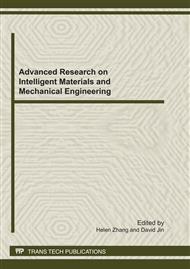p.113
p.117
p.121
p.127
p.131
p.136
p.140
p.146
p.151
Comparative Study of FVM and FEM Using Rectangular Element in Heat Conduction Problems for Conductive Materials
Abstract:
This paper established the mathematic model of plane transient temperature field using the Finite Volume Method according to the energy conservation rule, it clearly interprets the actual physical meaning of fundamental formula in the calculus of variations. The computational domains were subdivided by rectangular elements and the contributing formula was obtained from the elements to respective dots. Comparing the results with FEM results showed that they have same coefficient except the coefficient of time change. This paper analyzed the reason of the different results between FEM and FVM. In addition, the actual problem of two-dimensional temperature field of thermal calculations is resolved by the new arithmetic of FVM and the FEM. Comparing FVM results with the theoretical solution and FEM result shows that the FVM is more approximate to the theoretical solution than the FEM. The new arithmetic of FVM not only can simplify the process of establish equation and make the meaning of formula understandable but also can ensure the calculation accuracy. What’s more, it can extend widely the applied range of the FVM on the problem of temperature field, and has great application value on solving complicated technological problems.
Info:
Periodical:
Pages:
131-135
Citation:
Online since:
August 2011
Authors:
Price:
Сopyright:
© 2011 Trans Tech Publications Ltd. All Rights Reserved
Share:
Citation:


